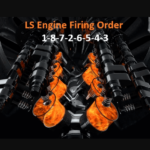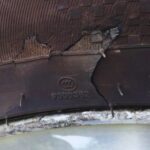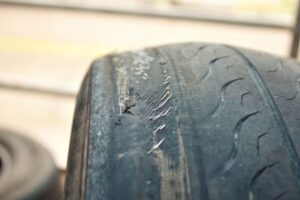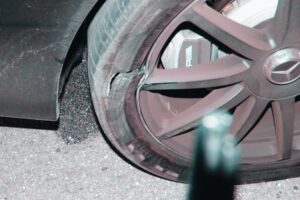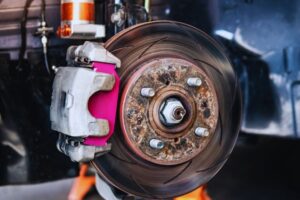Tires are one of the most important components of a vehicle.
They play a crucial role in ensuring the safety and performance of the car. When shopping for tires, you may have come across the term BSW. So, what does BSW mean on tires?
BSW stands for Black Sidewall. It refers to a specific tire sidewall design characterized by its sleek black color, devoid of additional elements like colored stripes, patterns, or lettering.
BSW tires are the most common type of tires found on vehicles today. They are designed to provide a clean and classic look to the tire, making them a popular choice among car owners.
Understanding BSW and Tire Terminology

Tire Sidewall Markings and Codes
Tires are one of the most important components of a vehicle. They are responsible for providing grip and traction on the road, ensuring a smooth ride, and keeping passengers safe. Tire sidewall markings and codes provide important information about the tire, including the brand, model, size, tire size, width, aspect ratio, wheel diameter, load index, and speed rating.
The sidewall of a tire is where all this information is displayed. The markings and codes are usually a combination of letters and numbers, and they can be a bit confusing to decipher. However, once you understand what each code means, you can make an informed decision when purchasing new tires.
Decoding BSW: Black Sidewall
One of the most common tire sidewall markings is BSW, which stands for Black Sidewall. As the name suggests, BSW tires have a black rubber material used on the sidewall. This is the standard sidewall color for many tires.
BSW tires are an excellent choice for drivers who want a tire that looks good and performs well. They are available in a wide range of sizes and models, so you can find the perfect tire for your vehicle.
When purchasing new tires, it’s important to consider the load index and speed rating. The load index is a number that indicates the maximum weight a tire can support, while the speed rating indicates the maximum speed that the tire can handle. Be sure to choose a tire with a load index and speed rating that is appropriate for your vehicle.
Tire Types and Designations
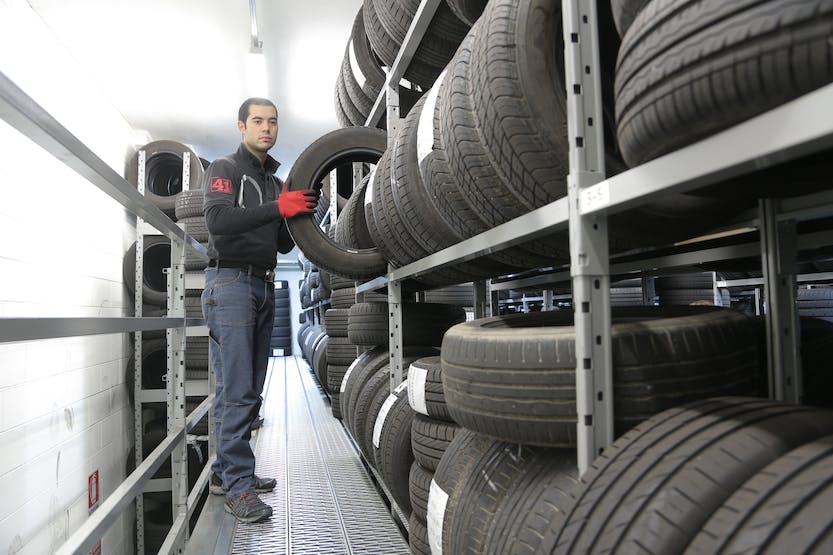
When it comes to tires, there are a variety of types and designations that can be confusing to the average consumer. This section will break down some of the most common tire types and designations to help you better understand what you’re looking at when shopping for tires.
P-Metric vs LT: Passenger and Light Truck Tires
One of the most basic distinctions between tires is whether they are designed for passenger vehicles or light trucks. Passenger tires are often referred to as P-Metric tires, while light truck tires are designated as LT tires.
P-Metric tires are designed for use on passenger vehicles, such as sedans, coupes, and SUVs. They are often lighter and more fuel-efficient than LT tires, making them a popular choice for daily drivers.
LT tires, on the other hand, are designed for use on light trucks, such as pickups and SUVs. They are typically heavier and more durable than P-Metric tires, making them better suited for heavy loads and off-road use.
Specialty Tires: OWL, RWL, and WSW
In addition to P-Metric and LT tires, there are also a variety of specialty tires that come with their own designations. One common designation you may see is OWL, which stands for Outlined White Letters.
These tires have white letters on the sidewall that are outlined in black, giving them a distinctive look. RWL, or Raised White Letters, are similar to OWL tires, but the white letters are raised rather than outlined.
Another specialty tire designation you may come across is WSW, which stands for White Sidewall. These tires have a white stripe on the sidewall, giving them a classic look that is often associated with vintage cars.
It’s important to note that these specialty tires are often more expensive than standard tires, so they may not be the best choice for everyone. However, if you’re looking for a unique look for your vehicle, they can be a great option.
Other Designations
In addition to the tire types and designations mentioned above, there are a variety of other designations you may come across when shopping for tires. Some common designations include:
- Radial: This refers to the construction of the tire, which features radial plies that run perpendicular to the tread. Radial tires are the most common type of tire on the market today.
- Reinforced: This designation indicates that the tire has additional reinforcement to help it handle heavy loads.
- Extra Load/Standard Load: These designations indicate the weight capacity of the tire. Extra Load tires are designed to handle heavier loads than Standard Load tires.
- M+S: This stands for Mud and Snow, and indicates that the tire is designed to perform well in muddy and snowy conditions.
By understanding these tire types and designations, you can make an informed decision when shopping for tires that will meet your specific needs.
Performance and Safety Features

BSW tires are designed to provide drivers with a safe and comfortable ride while also delivering performance and durability. In this section, we will discuss the various performance and safety features of BSW tires.
Traction, Treadwear, and Temperature Ratings
Traction, treadwear, and temperature ratings are important factors to consider when choosing BSW tires. Traction ratings indicate the tire’s ability to grip the road in wet or slippery conditions. Treadwear ratings indicate the expected lifespan of the tire, while temperature ratings indicate the tire’s ability to withstand heat buildup during prolonged use.
BSW tires typically have excellent traction ratings due to their unique tread patterns and rubber compounds. They also have high treadwear ratings, making them a durable choice for drivers. Additionally, BSW tires are designed to withstand high temperatures, making them a safe choice for drivers who frequently drive in hot climates.
Load Capacity and Speed Ratings
Load capacity and speed ratings are also important factors to consider when choosing BSW tires. Load capacity ratings indicate the maximum weight that a tire can safely carry, while speed ratings indicate the maximum speed that a tire can safely handle.
BSW tires typically have high load capacity ratings, making them a safe choice for drivers who frequently carry heavy loads. They also have high speed ratings, making them a good choice for drivers who frequently drive at high speeds.
Maintenance and Care for Longevity
To ensure the longevity of BSW tires, proper maintenance and care are essential. Here are some tips to help keep BSW tires in good condition:
Checking Tire Pressure and Load
Maintaining proper inflation pressure is important for BSW tires. Underinflated tires can cause poor handling and fuel economy, while overinflated tires can cause uneven wear and a harsh ride. The maximum air pressure for BSW tires is usually indicated on the sidewall.
It is important to check the inflation pressure regularly, at least once a month, using a tire pressure gauge. The recommended inflation pressure can be found in the owner’s manual or on a sticker located on the driver’s side door jamb. The pressure should be checked when the tires are cold, meaning the vehicle has not been driven for at least three hours.
In addition to checking inflation pressure, it is important to check the load capacity of the tires. Overloading the vehicle can cause excessive wear and damage to the tires. The load capacity can be found on the sidewall of the tire.
Understanding Tire Wear and Aging
Tire age and treadwear rating are important factors to consider when maintaining BSW tires. Tires that are over six years old, regardless of tread depth, should be replaced due to aging and deterioration. The treadwear rating can be found on the sidewall of the tire and indicates how long the tire is expected to last.
It is important to regularly check the tire tread depth using a tread depth gauge. The minimum legal tread depth is 2/32 of an inch, but it is recommended to replace the tires at 4/32 of an inch for safety reasons.
Tire wear can also be an indication of other problems with the vehicle, such as misalignment or suspension issues. It is recommended to have the tires inspected by a professional if there is uneven wear or unusual tire wear patterns.
Tips for Tire Shopping
When shopping for BSW tires, it is important to consider the vehicle’s needs and driving conditions. Choosing the right tire for the vehicle can help improve handling, fuel economy, and overall performance.
It is recommended to choose a tire that matches the vehicle’s load capacity and speed rating. The speed rating can be found on the sidewall of the tire and indicates the maximum speed the tire can handle safely.
Legal and Industry Standards

DOT Code and Tire Identification
The U.S. Department of Transportation (DOT) requires all tire manufacturers to imprint a DOT code on their tires. This code is a combination of letters and numbers that identify the manufacturer, plant, tire size, and date of manufacture.
The DOT code is required for consumer protection and safety. It helps the National Highway Traffic Safety Administration (NHTSA) to monitor tire defects and issue tire recalls when necessary.
In addition to the DOT code, tires also have other identification markings on their sidewalls. These markings include the tire size, load index, speed rating, and BSW or white lettering. It is important for consumers to understand these markings to ensure they purchase the correct tire for their vehicle and driving needs.
Tire Recalls and Consumer Safety
Tire recalls are issued when a tire defect is discovered that could potentially cause harm to consumers. The NHTSA works with tire manufacturers to issue recalls and provide consumers with information on how to get their tires replaced or repaired. It is important for consumers to register their tires with the manufacturer to ensure they are notified in the event of a recall.
Consumers can also check the NHTSA website for information on tire recalls and safety ratings. It is recommended that consumers regularly check their tires for wear and damage and have them inspected by a professional if any issues are found.
Overall, the DOT code and tire identification markings, along with tire recalls and consumer safety, are important aspects of the tire industry that help ensure the safety and protection of consumers.
Final Thoughts
BSW is a common abbreviation used in the tire industry, which stands for Black Sidewall. It is a marking used to describe the appearance of the tire’s sidewall, which connects the tread to the wheel. As the name suggests, BSW tires have a black sidewall, which is the most common color for tires.
When shopping for tires, it is important to understand the meaning of different sidewall markings, including BSW. This can help you choose the right tire for your vehicle and ensure that you get the best performance and safety.
In addition to BSW, there are other sidewall markings that you may come across, such as OWL (Outline White Lettering), RWL (Raised White Lettering), and ORWL (Outlined Raised White Lettering). These markings indicate the color and style of the sidewall, and can also affect the performance and handling of the tire.
Overall, understanding the meaning of BSW and other sidewall markings can help you make an informed decision when buying tires. It is important to consider factors such as tread pattern, size, load capacity, and speed rating, in addition to the sidewall markings, to ensure that you get the right tire for your vehicle and driving needs.

